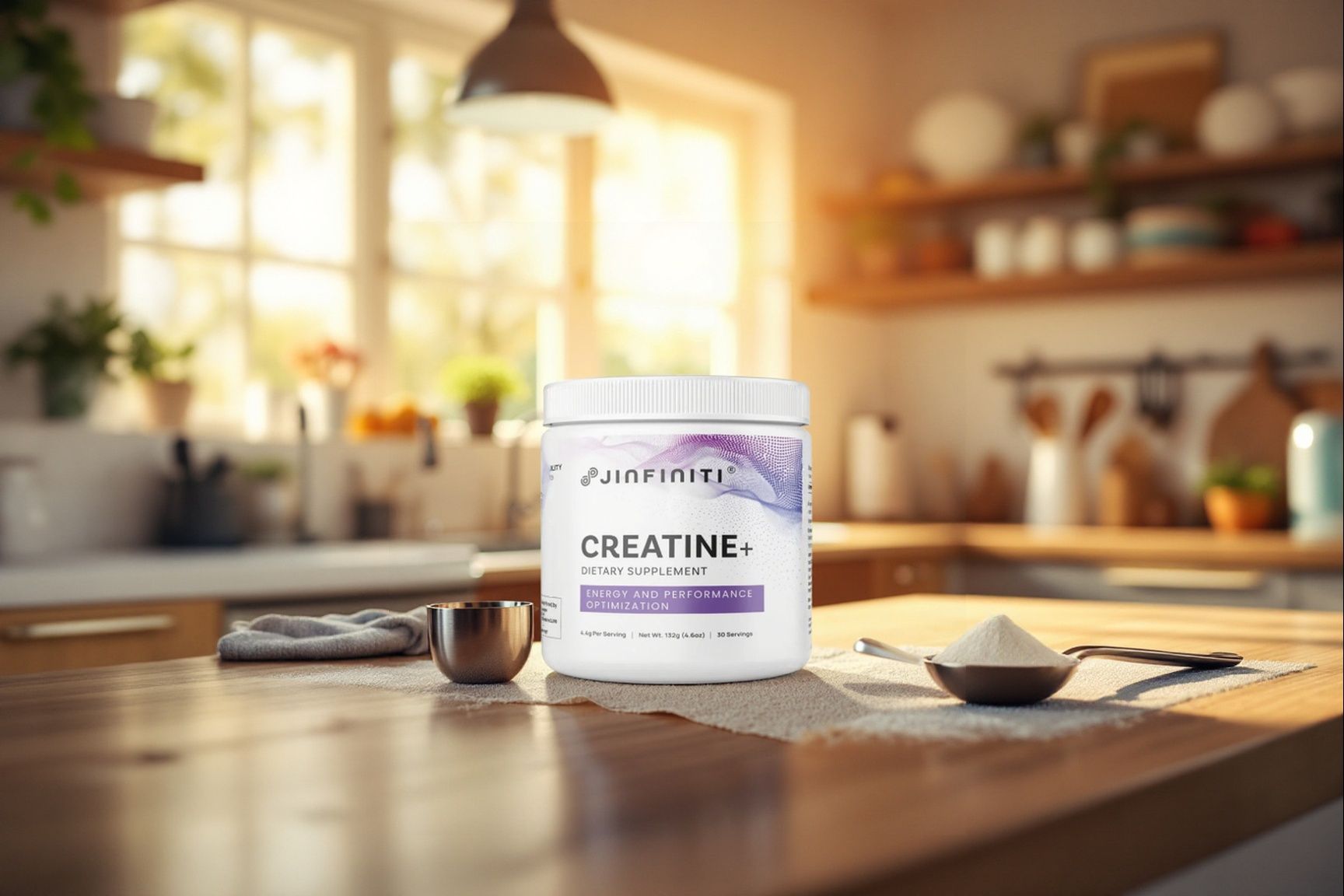Top Flavonoid Foods and Supplements for Antioxidant Support
Those bright fruits and vegetables on your plate aren’t just pretty—they’re packed with health-boosting compounds called flavonoids.
These natural substances in fruits, vegetables, and supplements work as antioxidants that support your health when eaten as part of a balanced diet.
Whether you’re focusing on immune health or simply wanting more nutritious foods in your daily routine, flavonoids are important nutrients to know about.
This guide covers what flavonoids are, which common foods contain them, and how to select supplements if you’re looking for extra benefits.
Key Takeaways
- Flavonoids are plant-based antioxidants that neutralize harmful free radicals and reduce oxidative stress.
- Richest sources include berries, citrus, tea, dark chocolate, and leafy greens, with 5-9 daily servings recommended.
- Supplements can provide additional benefits but should complement a diverse diet and be used with awareness of potential medication interactions.
What are Flavonoids?

Flavonoids are natural plant compounds that work as antioxidants in your body.1 They help neutralize harmful free radicals that can accumulate over time. When too many free radicals build up, it creates oxidative stress that may impact your health.
Your body naturally fights oxidative stress, but eating flavonoid-rich foods provides extra protection.2 Good sources include berries, citrus fruits, onions, and dark chocolate.
Flavonoid supplements are available for those wanting higher amounts, but check with your doctor first to ensure they’re appropriate for you.
Potential Health Benefits of Flavonoids
Flavonoids show promising health benefits, backed by both observational studies and controlled experiments:
- Antioxidant Activity: Flavonoids, especially flavonols and flavan-3-ols, shield cells from harmful free radicals that contribute to aging and disease.
- Anti-Inflammatory Effects: Bioflavonoids help regulate inflammatory responses, potentially easing conditions like arthritis and inflammatory bowel disease.3
- Heart Protection: Research indicates flavanones and anthocyanidins help lower blood pressure and improve blood vessel health, potentially reducing heart disease risk.4
- Cancer-Fighting Properties: Studies suggest anthocyanidins and isoflavones may inhibit cancer cell growth, though results vary and more human research is needed.5
- Brain Health: Flavonols such as quercetin may improve brain function and protect against Alzheimer’s. People who consume more flavonoids show lower dementia rates, though direct cause and effect remains unproven.6
These benefits show the value of dietary flavonoids, though individual responses vary because each person’s genetics and gut bacteria affect how well these compounds are absorbed.
Best Food Sources of Flavonoids

The best way to obtain flavonoids is through a diverse diet rich in fruits, vegetables, and plant-based beverages.
Here’s a breakdown by type of flavonoid, using information from the USDA Database for the Flavonoid Content of Selected Foods and other studies.7
1. Flavonols: Nature’s Heart Protectors
Top Sources:
- Onions (particularly rich in quercetin)
- Kale and broccoli
- Apples and grapes
- Capers and dill
- Dark chocolate and tea
Health Benefits: Known for their cardiovascular benefits and cancer-prevention properties, particularly in reducing prostate cancer risk.8
2. Flavanones: Citrus Champions
Top Sources:
- Oranges, grapefruits, and tangerines
- Lemons and limes
- Rich in compounds like hesperetin and naringenin
Health Benefits: Associated with improved vascular health and powerful anti-inflammatory effects.
3. Flavan-3-ols: Tea’s Secret Weapon
Top Sources:
- Green tea and black tea (providing about 83.5% of total flavonoids in the average U.S. diet)
- Cocoa and dark chocolate
- Apples, grapes, and various berries
Health Benefits: Strong evidence supports their cardiovascular benefits, including improved blood flow and reduced cholesterol levels.9
4. Anthocyanidins: The Colorful Defenders
Top Sources:
- Berries (blueberries, blackberries, raspberries, strawberries)
- Red grapes and pomegranate
- Red cabbage and red onions
- Purple potatoes
Did you know? Some varieties of blackberries and cherries contain over 300 mg of anthocyanidins per 100g!
Health Benefits: Associated with reduced risk of diabetes and age-related cognitive decline, thanks to their potent antioxidant properties.10
5. Flavones: The Lesser-Known Allies
Top Sources:
- Parsley (rich in apigenin and luteolin)
- Celery and hot peppers
- Chamomile tea and lemon verbena
Health Benefits: Emerging research suggests potential anti-cancer and anti-inflammatory effects.
6. Isoflavones: Soy’s Superpower
Top Sources:
- Soybeans and edamame
- Tofu and tempeh
- Soy milk and other soy products
Health Benefits: Linked to hormone balance, particularly beneficial for menopausal symptoms and possibly reducing breast cancer risk in postmenopausal women.11
The 10 Highest Food Sources of Flavonoids by Content
| Food | Flavonoid Type | Content (mg/100g) |
|---|---|---|
| Dried Parsley | Flavones | 13,525.9 |
| Blueberries | Anthocyanidins | 1100 |
| Elderberries | Anthocyanidins | 769 |
| European Black Currants | Anthocyanidins | 272 |
| Raw Parsley | Flavonols | 227.17 |
| Green Tea | Flavan-3-ols | 128 |
| Red Onion | Flavones | 111 |
| Yellow Wax Peppers | Flavonols | 51 |
| Oolong Tea | Flavan-3-ols | 50 |
| Ancho Peppers | Flavonols | 28 |
Adding Flavonoids to Your Daily Diet

Creating a “flavonoid-rich plate” is simpler than you might think:
- Start your day with berries on breakfast cereal or yogurt
- Enjoy citrus fruits as mid-day snacks
- Add onions and leafy greens to salads and main dishes
- Sip green tea throughout the day
- Incorporate soy products into your weekly meal rotation
According to experts from the USDA and Harvard Health, consuming 5-9 servings of fruits and vegetables daily provides approximately 190-300 mg of flavonoids—the amount consistently associated with significant health benefits.12 13
Top 6 Best Flavonoid Supplements

Adding flavonoid supplements to your routine can be a great way to boost your antioxidant intake. Here are six popular options that offer a range of potential benefits:
1. Quercetin
Quercetin is widely studied for its antioxidant, anti-inflammatory, and immune-supporting properties. It is found in fruits and vegetables such as apples, onions, and berries. It has been shown to reduce inflammation, support exercise recovery, and improve blood pressure.
2. Green Tea Extract
Green tea extract contains catechins, such as epigallocatechin gallate (EGCG), which exhibit strong antioxidant properties and anti-inflammatory effects.14 These compounds support heart health, brain function, and energy levels.
3. Fisetin
Fisetin is a lesser-known flavonoid found in strawberries and apples. It has been studied for its role in promoting healthy aging, cognitive function, and reducing oxidative stress.15
For a powerful blend, consider Jinfiniti’s SenoAid, which combines Quercetin, Fisetin, and Green Tea Extract in one supplement.
4. Grape Seed Extract (OPC)
Grape seed extract is rich in oligomeric proanthocyanidins (OPCs), which are powerful antioxidants. It supports cardiovascular health, improves circulation, and protects against oxidative stress.16
5. Curcumin
Curcumin, the active compound in turmeric, is known for its antioxidant and anti-inflammatory properties. It has been shown to support joint health, brain function, and overall wellness by reducing oxidative stress and inflammation.
For a highly potent option, consider Jinfiniti’s Turmeric+ curcumin supplement, a powerful blend designed to maximize curcumin’s bioavailability.
6. Apigenin
Apigenin is a flavonoid found in parsley, chamomile, and celery. It may help promote muscle relaxation, supports heart health, and has neuroprotective effects due to its antioxidant and anti-inflammatory properties.17
Precautions and Considerations

Despite their benefits, flavonoids require careful consideration in certain situations.
Potential medication interactions:
- May interact with blood thinners like warfarin18
- Research in Author Manuscript shows quercetin might temporarily protect cancer cells from chemotherapy agents19
- Could potentially interfere with cancer treatment effectiveness
People who should exercise caution:
- Pregnant or breastfeeding women
- Individuals with hormone sensitive conditions
- People receiving medical treatments
A systematic literature review highlights a lack of research on flavonoid safety during pregnancy.20
Balancing supplements and diet:
- Supplements should support rather than replace healthy eating
- Whole foods provide flavonoids naturally plus additional nutrients
- Berries, citrus fruits, and leafy greens are excellent natural sources
Combining a nutrient rich diet with appropriate supplements allows you to benefit from flavonoids while safeguarding your health.
Takeaway
Flavonoids offer numerous health benefits and are readily available in common foods such as berries, citrus fruits, and dark chocolate. Adding these to your meals provides your body with natural antioxidants and other valuable compounds.
Supplements like quercetin, green tea extract, or curcumin can provide extra support. Remember that supplements complement a healthy diet rather than replace it.
Consult with your healthcare provider before starting any supplement to determine what works best for your individual requirements.
The goal is balance. Eating diverse nutrient rich foods and selecting appropriate supplements allows you to harness the full potential of flavonoids in a sustainable manner.
Referenced Sources:
- https://pmc.ncbi.nlm.nih.gov/articles/PMC11351814/ ↩︎
- https://pmc.ncbi.nlm.nih.gov/articles/PMC7211351/ ↩︎
- https://pmc.ncbi.nlm.nih.gov/articles/PMC10347382/ ↩︎
- https://pmc.ncbi.nlm.nih.gov/articles/PMC6315948/ ↩︎
- https://pmc.ncbi.nlm.nih.gov/articles/PMC5429338/ ↩︎
- https://pmc.ncbi.nlm.nih.gov/articles/PMC11411383/ ↩︎
- https://www.ars.usda.gov/northeast-area/beltsville-md-bhnrc/beltsville-human-nutrition-research-center/methods-and-application-of-food-composition-laboratory/mafcl-site-pages/flavonoids/ ↩︎
- https://pmc.ncbi.nlm.nih.gov/articles/PMC4631581/ ↩︎
- https://pmc.ncbi.nlm.nih.gov/articles/PMC9776652/ ↩︎
- https://pmc.ncbi.nlm.nih.gov/articles/PMC11174612/ ↩︎
- https://pmc.ncbi.nlm.nih.gov/articles/PMC2377415/ ↩︎
- https://www.ars.usda.gov/ARSUserFiles/80400525/articles/aicr06_flav.pdf ↩︎
- https://www.health.harvard.edu/mind-and-mood/the-thinking-on-flavonoids ↩︎
- https://pmc.ncbi.nlm.nih.gov/articles/PMC7084675/ ↩︎
- https://www.sciencedirect.com/topics/pharmacology-toxicology-and-pharmaceutical-science/fisetin ↩︎
- https://www.mcgill.ca/oss/article/student-contributors-health-and-nutrition/grape-seed-extracts-and-vascular-health ↩︎
- https://pmc.ncbi.nlm.nih.gov/articles/PMC6472148/ ↩︎
- https://pubmed.ncbi.nlm.nih.gov/28135601/ ↩︎
- https://pmc.ncbi.nlm.nih.gov/articles/PMC3021775/ ↩︎
- https://pubmed.ncbi.nlm.nih.gov/26240050/ ↩︎





























































